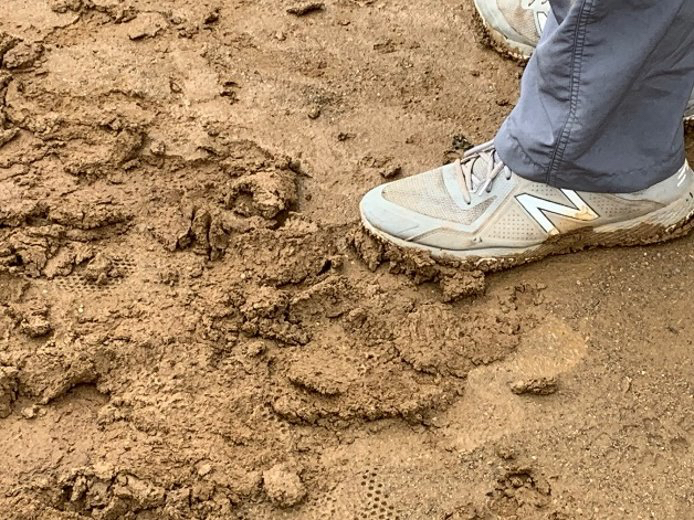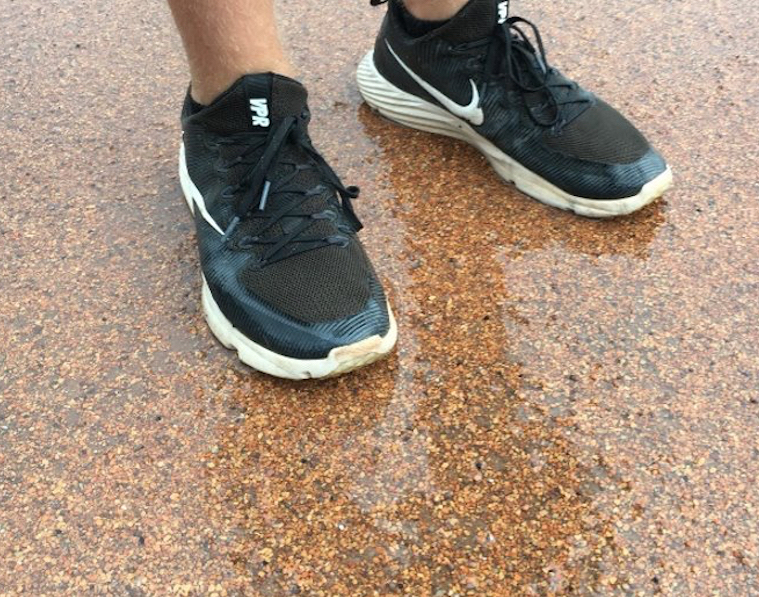The topic of infield skin selection and management has more than grasped my interest since I got into the game in 1994. Is it an art or a science? In the early ‘90s, during my time at Clemson, we studied soil science. We learned about the makeup and design of the USGA rootzone, which was engineered and introduced to the game of golf in the ‘60s. The USGA spec would go against the old push-up green that had been common practice since the game of golf began. Push-up greens were inconsistent throughout the country and around the world due to different local or native soils. The introduction of engineered soils to golf came with unequivocal benefits such as the ability to play in the rain, or immediately after, without adverse impacts to the putting surface; a more consistent putting surface in all weather conditions; higher tolerance to wear and tear; increased number of golf rounds; higher resistance to compaction; and the ability to duplicate that same putting surface/rootzone from holes 1 through 18 around the world. At the time, this was not hard to grasp. Cost per square foot may have initially played a factor in the decisions made to install a USGA green versus a push-up green, but it did not take long for the entire industry to make sense of the return on investment.
It wasn’t until leaving Clemson in 1994 and working on my first couple of ball fields that I started to wonder why the science of infield skins was not discussed in a single college class or described in a textbook that made sense like the USGA golf green. In the ‘90s, every ball field in the country was using a local or native infield material. At best, these mixes were dug out of the ground and run through some sort of screen to remove the rocks. This meant that infields were different in all parts of the country. For example, infields in the Midwest have more silt than clay, and therefore are extremely dusty when dry and very sticky when wet; whereas materials in the southeast have very little silt with a high percentage of sand that suffer from extreme migration issues and very low moisture-holding capacity. Back then, I accepted that working with infield skins was more of an art than a science. Today, I realize that art translated into spending more time and aggravation to achieve acceptable playing conditions. For example, it involved more time spent to achieve proper moisture; frequent rolling at a timely, and small, window of ideal moisture conditions; using more conditioner to get games in following rain; more tarping; and additional work to maintain position areas and edges. I was not the only sports field manager at the time who longed for some sort of standard for a soil specifically engineered for baseball/softball.
Fast forward to 2020, and we now have at our disposal engineered infield material with benefits similar to the USGA rootzone. First introduced to the sports field industry in 2004, this innovation started at the upper echelons of the game. However, although this technological change has been proven throughout the country at different levels, it is still not totally understood or accepted by the masses. What is an engineered infield material? It is designed based on science and raw data with the following aspects in mind: sand size and shape; percentages of sand/silt/clay; unique mineralogy of the clay; silt:clay ratio; breakdown of course versus fine silt; and can be duplicated indefinitely across the country. Some of the benefits of an engineered infield surface versus a local or native infield are increased resiliency; quicker resumption of play following rain; more consistent; reduced tarp pulls; reduced amount of conditioner required to get games in; adding value to your facility; selling more games; recruiting; a predictable maintenance program; and, most importantly, a safer playing surface.
Understanding these benefits is the fist step to implementing a long-term solution for your facility. If you are not well versed on the pros and cons of native materials versus a legitimate engineered infield material, you could get laughed out of the room when upper management compares the cost per ton of each. This comparison is apples to oranges, and you need to be able to clearly explain the differences.
A natural field costs $5 to $10 per square foot to build. An artificial surface costs $10 to $20 per square foot. Although these may seem like wide ranges, in most cases the end user will spend a fraction of that for a native infield surface. This number is typically only .70 cents to $1.50 per square foot for a 4-inch profile. But cheap and good aren’t synonymous terms!
Similar to the USGA engineered rootzone, an engineered infield material cost more per ton to purchase than a local or native source. Of course, this is because of the process that takes place during production. The cost per square foot to purchase a legitimate engineered infield material is $2.50 to $4 per square foot for a 4-inch profile. These numbers are easy to legitimize, and well within acceptable range, when building a new field or executing a major renovation project.
Seventy percent or more of the game occurs on the skinned portions of a ball field. Although an infield surface only comprises 10 to 20 percent of the total surface, it is where most of the game is played, requires the majority of maintenance, most of the challenges and headaches are exposed, games are cancelled due to weather conditions, can dictate the outcome of a game due to inconsistencies, and poses the greatest risk for injury. Why cut yourself short on the most important part of your field where the majority of the game is played?
If you have an existing infield with no plans in the near future to remove and replace, then consider the amendment approach. Sports field managers have long been amending their infields. This process has included, but not been limited to, tilling in sand, tilling in heavy clay, and tilling in calcined clay. This approach has not been based on science, but determined on touch and feel (art), vendor recommendation, or what was considered industry standard. My experience with this throughout the years has been that tilling in sand may have been done to get games in quicker after rain, tilling in clay may have been done to tighten up a loose or shifty mix, and tilling in calcined clay has been attempted to solve just about any problem. Today the amendment process is streamlined and proven based on science that is predictable, replicable and testable. The steps are really quite simple to comprehend: Test your existing material, analyze the data, determine where you should be, and then select the proper engineered amendment based on the results and who you are. Incorporating the proper amendment into your infield will leave you with a permanently modified infield profile that will provide higher performance moving forward, and will reduce maintenance.
There is no doubt that it takes time for a technological change to fall into place throughout an entire industry like the engineered USGA rootzone did for golf. Some in our industry have grasped this innovation, and are reaping the benefits of a higher-performing infield surface and seeing the return on investment. We are not far off from the majority of our industry grasping this concept and implementing these new best practices that are proven based on science and results in the field.

Comparison of engineered (top) versus native/local (above) mixes following a rain event.
Editor’s Note: This material was provided by DuraEdge Products, Inc., and was written by Luke Yoder, senior VP of business development.


